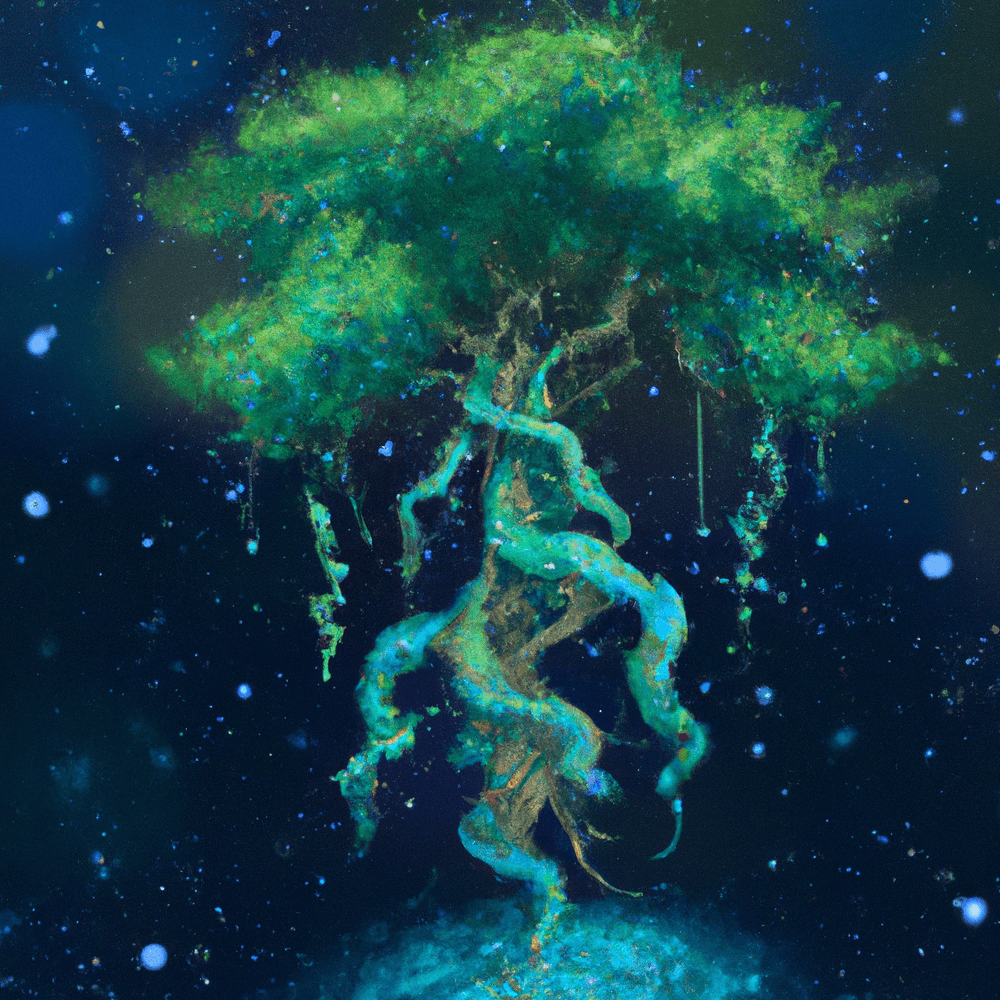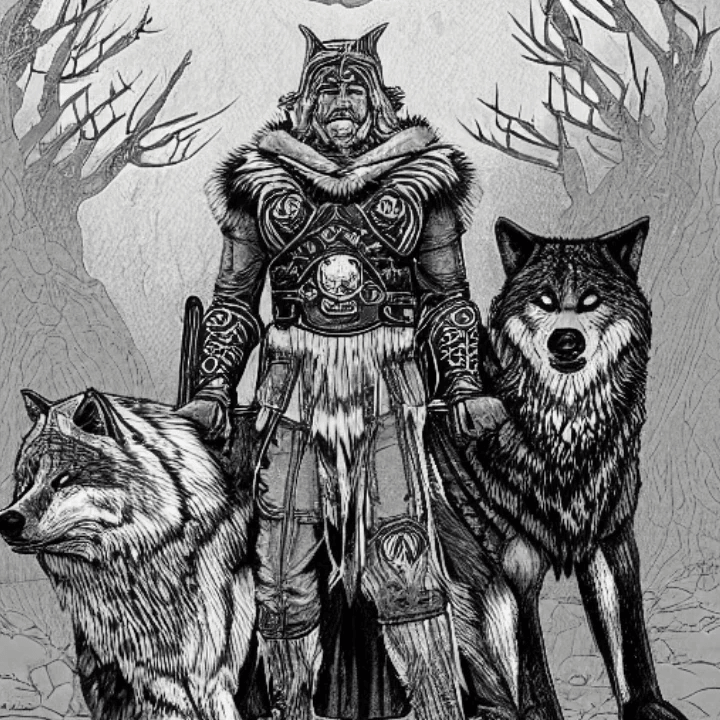Ragnarök: Prophesy of The End of Gods
The Norse mythology of the Early Middle Ages was rich with prophecy and legend, with the ultimate fate of the gods being foretold in the infamous Ragnarök. The Old Norse word for “Fate of the Gods,” Ragnarök, was said to be the catastrophic event that would bring an end to the universe and most its deities. The story of Ragnarök serves as a reminder of the cyclical nature of life and the potential for renewal and rebirth that follows cataclysmic events, an integral part of Norse beliefs.
Norse mythology foretold Ragnarök as a glorious battle between the forces of good, led by Odin, the chief of the gods, and evil, led by Loki, Odin's nemesis. This titanic clash of divine forces is a symbolic representation of the cyclical nature of life, death, and rebirth. It is believed that this colossal conflict will be so ferocious that it would destroy the entire world, yet from its ashes, a new and improved version of the world will arise.

The Æsir gods were the most recognizable among the two pantheons, consisting of the likes of Odin, Thor, Frigg, Balder, Heimdall, Höðr, and Týr. The Vanir, the second pantheon, comprised Njörðr, Freyr, Freya, Gullveig, and Nerthus. The gods would fight fiercely against one another, with the Æsir and Vanir joining forces to battle Loki's evil forces.
The Fimbulwinter: An Ominous Sign of Ragnarök
In Norse mythology, the Fimbulwinter was seen as a harbinger of the infamous Ragnarök, the catastrophic event that would end the universe and all its deities. This winter was characterized by its relentless cold and darkness, lasting three years without any summer to break the harshness. The impact of this never-ending winter on the people was told to be profound, with widespread suffering and hardship. The harsh conditions of the Fimbulwinter would even cause families to turn on each other, as they struggle to survive in the face of such extreme adversity.
The Devouring of the Sun and Moon: A World in Darkness
As if the Fimbulwinter was not enough of a sign of impending doom, the wolves Skoll and Hati were said to catch and devour the sun and moon, plunging the world into darkness. This event would cause the skies to be devoid of light but also caused the earth to tremble, adding to the growing sense of unease and fear among the people.
The Release of Fenrir: A Threat to All Life
Fenrir, the demonic wolf-son of Loki, was a formidable force of evil whom the gods once bound. However, with the arrival of the Fimbulwinter and the other ominous signs, it was foretold that he would break free from his constraints and run rampant across the world. Unfortunately, this release would cause even more chaos and destruction, as Fenrir's formidable strength and cunning made him a threat to all life. In some popular versions of the myth, Fenrir is also said to be responsible for devouring the sun before Ragnarök begins, while in others this feat is accredited to Fenrir's offspring, Skoll.

The Poisoning of the Sea and Land: A Toxic Legacy
The sea serpent Jörmungandr was also said to play a role in the events leading up to Ragnarök. This massive creature was prophesied to spew its toxic venom across the sea and land, poisoning all it touched. The venom of Jörmungandr was so potent that it would leave a toxic legacy, poisoning the earth and rendering it uninhabitable for generations to come.
The Final Battle of Ragnarök: The Clash of Divine Forces
The final battle of Ragnarök was a momentous event in Norse mythology, bringing together all the forces of good and evil in a fateful showdown. The events of Ragnarök, as foreseen by a völva, were already known and the outcome was predetermined. In its story as foretold, the gods of the Æsir and Vanir, along with the einherjar, the honored dead whom Odin had chosen, marched to the field of Vigrid, ready to face the forces of evil led by Loki. The sky was dark with storm clouds, and the ground trembled beneath their feet as the universe's fate hung in the balance.
The battle was fierce, with lightning bolts striking down from the sky and clashing against the shields of the gods. Thor, the god of thunder, fought against Jörmungandr, the massive sea serpent, striking it with his mighty hammer, Mjölnir. Odin, the all-father, faced off against Fenrir, the demonic wolf, in a duel that would determine the fate of all life. Freya, the goddess of love and fertility, fought alongside her brother Freyr against the giants and monsters that threatened to overrun the world.
The gods fought with all their might, but the forces of evil were too great. Odin was swallowed whole by Fenrir, Jörmungandr mortally wounded Thor, and the giants succeeded in destroying the world tree, Yggdrasil, causing the sky to collapse and the earth to be consumed by flames. The once-beautiful world was reduced to ashes, with only the goddess of death, Hel, remaining to oversee the remnants of the universe.
The Aftermath
After Ragnarök, a small group of gods, humans, and other beings are fated to survive the destruction. The world will be plunged into darkness and bitter cold, but life shall slowly begin to rekindle. The survivors are bound to work together to rebuild their homes and communities, relying on their own resourcefulness and determination to survive in the harsh, new world. Despite the challenges, the spirits of the survivors shall be lifted by the arrival of a new generation of gods and the promise of a brighter future. As the survivors come together to create a new world, they will inevitably draw strength from the lessons learned during Ragnarök, and the wisdom passed down from the previous generations. With hope and perseverance restored, the world is foreseen to flourish once again, marking a new chapter in the ongoing cycle of birth, life, death, and rebirth.
The story of Ragnarök serves as a powerful symbol of the cyclical nature of existence and the impermanence of all things. It underscores the idea that everything must come to an end and the possibility for renewal and rebirth. Furthermore, the tale serves as a reminder of the importance of facing life's challenges head-on, accepting change, and working together to build a better future. Beyond its historical and cultural significance, Ragnarök continues to resonate with people today as a reminder of the power of the human spirit in the face of adversity and the hope that can be found in even the darkest of times. In this way, the story of Ragnarök remains a timeless symbol of the triumph of hope over fear and the enduring human desire to overcome life's challenges and create a better world.


